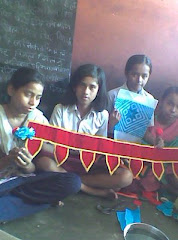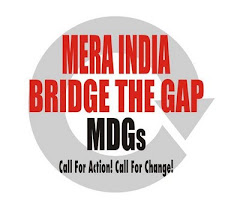Finally there seems to be some action on the Australian front. With external affairs minister S M Krishna’s visit to Australia, the Indian government has shown that it cares about the fate of its youngsters who landed on the Australian shores for higher education. Read about Krishna's interview to The Australian - http://www.theaustralian.news.com.au/story/0,25197,25906785-5013871,00.html
Krishna is the first senior minister to go to Australia following the spate of attacks on Indian students. The incidents drove the students to protest on the streets in a foreign country to highlight the rising incidents of violence against them. These incidents have been termed as racial by the Indian students who were attacked, but have been downplayed by the Australian authorities as 'opportunistic violence'.
One would have expected Australia to act fast following the violent attacks. Instead what happened, was strong criticism of the manner in which the Indians ‘behave’, playing loud music, talking loudly on the telephone, cooking with strong spices, keeping their rooms untidy, working late and travelling at night on trains ... as if these were reasons for them to be attacked with screwdrivers, have their eyes gouged and cars burnt. Surely, there is a “developed country” way to address such behaviours among the students! One that ensures that those who come to stay for a couple of years are sensitised on what is expected of them so that they do not offend their hosts. Now whose responsibility is it to ensure that? Of course, the Australian universities and educational institutes that line up in India and charge exorbitant fees.
As the media in India and Australia focussed on these attacks, the manner in which some private colleges had been duping the Indian students and promising permanent residency also came to light.
According to reports reaching here, some of these educational institutes have been found to be hole in the wall kind of places that have cheated the students, painting a rosy picture of the kind of training they would be given. But once the students land up there they find a paucity of qualified instructors and infrastructure. These institutes are worse, much worse, than many third rate institutions in India. At least here you and your family do not go bankrupt fianancing a third rate education.
The Australian government, rattled by the negative publicity that the attacks have brought, had sponsored a trip for some Indian journalists to see that it is not as bad as the Indian media painted it to be. Australia was not racist; they wanted the journalists to check the situation out for themselves. But all we got to see was the Australian PM Rudd holding forth on how he and his family liked Indian food, the same strong curry smelling fare, that some of his countrymen held against Indian youngsters. Wonder what happened to all the other stories that the journalists were to have done?
Following Krishna’s visit, the Australian government has announced that it would review and revamp its educational sector and promised that the overseas students would be safe.
But just as this announcement came in, the Chinese government issued an advisory to its students in Australia, following a brutal attack on four Chinese students in Gold Coast. While Krishna expressed his satisfaction with the assurances given to him by the Australian authorities, Indian student representatives had their reservations. They wanted more than mere assurances.
However, Indian students should be very careful in their selection of the institute after the horror stories that have emerged of unscrupulous education agents in Down Under. Here is a story of how a flight school in Sydney, Aerospace Aviation duped its students.
The best way to check about the worthiness of an institute is to do an independent follow up with some Indian students who have studied there. If the school does not provide you with particulars of its alumni, you can be sure that it has something to hide.
An Indian mother is very glad that she did not send her 17 year old daughter there for the culinary arts. The representative of the institute who had come to India for the recruitment drive was a smooth talking Indian settled in Australia, who wanted an immediate commitment. The hardsell was what cautioned the mother. It also made her wonder why the institute, headquartered in Switzerland, didn’t set up shop in India? A lot many students would then enrol, and the fees too would come down substantially.
It seems such a shame that Indians have to head elsewhere to pursue courses which can easily be offered here. The Human Resource Development minister, Kapil Sibal, seems very sincere about his job. Let us hope he can change the scenario for the Indian students, so that they can get vocational training at an affordable price in India itself.
To all those students looking at education in Australia or/and permanent residency, I recommend Cristopher Mitchell's blog. It shows the problems you can face as Indians in that country. There is also an earlier post on the Indian government advisory to students.
For an understanding of why things are the way they are between the two countries click here ..
Subscribe to:
Post Comments (Atom)
.jpg)





+(2).jpg)


1 comment:
I think the admission to their (Australian) colleges this year has taken a hit from here (India), as students and parents rethink on their decision. That could have forced this Victorian premier to make a visit and try to pocket some money.
It's high time we have respected post graduate institutes in India. At present no post graduate engineering education has value in India, even the IIT's are second rate when it comes to their post graduation in comparison to what they offer for graduation.
However, I'm surprised at the number of students trying to go to Australia for MBA. I thought we have enough number of good institutes here?
Post a Comment